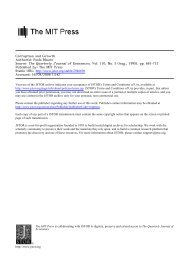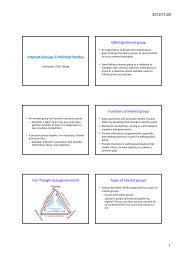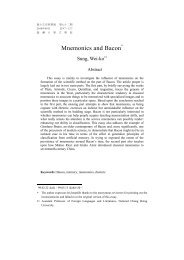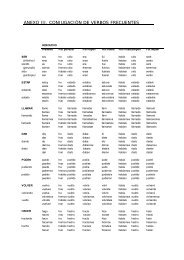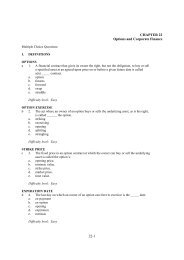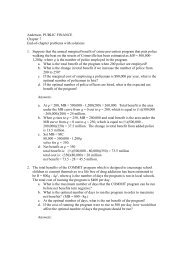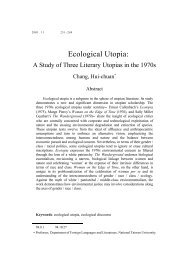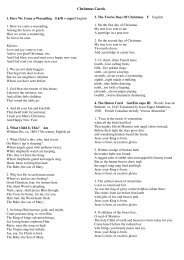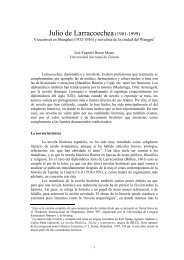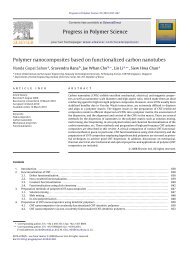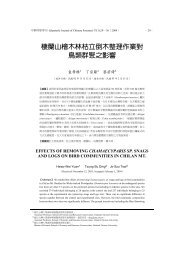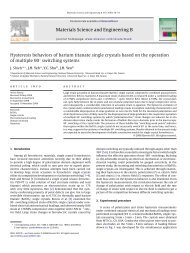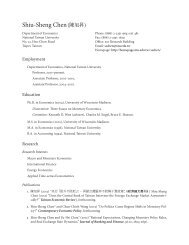Chapter 5 A Closed-Economy One-Period Macroeconomic Model
Chapter 5 A Closed-Economy One-Period Macroeconomic Model
Chapter 5 A Closed-Economy One-Period Macroeconomic Model
You also want an ePaper? Increase the reach of your titles
YUMPU automatically turns print PDFs into web optimized ePapers that Google loves.
48 Williamson <strong>Macroeconomic</strong>s, Third Edition<br />
5. Change in preferences.<br />
(a) At the margin, the consumer decides that leisure is more preferred to consumption. That is, the<br />
consumer now requires a bigger increase in consumption to willingly work more (consume less<br />
leisure). In more intuitive language, the consumer is lazier.<br />
(b) To work out the effects of this change in tastes, we refer to the figure below. The production<br />
possibility frontier in this example is unchanged. The consumer now picks a new point at which<br />
one of the flatter indifference curves is tangent to the production possibilities frontier. That is,<br />
equilibrium will shift from point A to point B. Consumption falls and leisure rises. Therefore, the<br />
consumer works less and produces less. Because employment has fallen, it also must be the case<br />
that the real wage increases.<br />
(c) This disturbance, which some might characterize as a contagious outbreak of laziness, would<br />
have the appearance of a recession, as output and employment both fall. The consequent<br />
reduction in consumption is also consistent with a typical recession. However, in this case the<br />
real wage would rise, which is inconsistent with the business cycle facts. Therefore, this type of<br />
preference change is not a cause of recessions.



